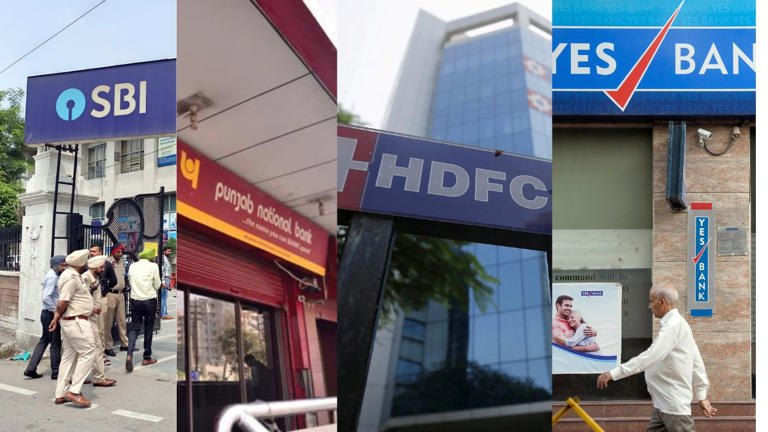
Sold a plot of land or a flat or any such property recently? You could be liable to pay Long Term Capital Gains Tax. However, if you plan to re-invest it in a residential property or any other specified...
Read More
Minimum Balance Norms For Saving Accounts At SBI, HDFC, ICICI And Yes Bank | Explained If you open a savings account in a bank, the bank requires you to maintain a minimum balance. This amount may vary depending on the type of account and the services ...
Read MoreUnder the old indirect tax system, you had to create a tax invoice or a retail or commercial invoice for most sales. But under the GST, you have to generate a tax invoice or a bill of supply, and the invoice requirements have changed. Here’s an overview of when to use these documents and what to include...
Read More
Sold a plot of land or a flat or any such property recently? You could be liable to pay Long Term Capital Gains Tax. However, if you plan to re-invest it in a residential property or any other specified asset within the stipulated time frame, then you are eligible to claim exemption of Long Term Capital Gains Tax on sale of Capital Assets under section 54 to 54GB of The Income Tax Act. Reinvestment of the capital gains made on the sale of capital assets by the seller, has provided with relief from capital gains tax if such capital gain is re-invested in certain specified assets within a specified time limit as per Capital Gains Account Scheme, introduced in 1988 by the Central Government.
A taxpayer who is unable to re-invest capital gains in the specified investment before furnishing the return of income and specified time limit for the investment has not expired, is required to deposit such unutilised capital gain in the capital gains account before furnishing return of income but not beyond the due date for furnishing return of income. You can park the proceeds in a nationalized bank.
Where Should the Capital Gains Account be Opened?
The account can be opened in any of the 28 banks that the government has notified since the scheme's inception in 1988. Syndicate Bank, the Central Bank of India, IDBI Bank, Bank of Baroda, State Bank of India and Corporation Bank are few of the banks that participate in this scheme.
Types of Capital Gains Account Scheme
Capital gains accounts come in 2 categories: Savings and Term Deposit.
CGAS Type A - Savings Account:
A capital gains savings account is similar to the regular savings account in any bank. The applicable interest rate is also the same as that given on regular saving schemes. You will receive a passbook that has records of all transactions - deposits, interest received, withdrawals - made in the account. The amount deposited in this account will have high liquidity and can be withdrawn at any time.
CGAS Type B - Term Deposit Account:
A capital gains term deposit account is similar to the fixed deposit schemes of banks. The rate of interest and terms surrounding withdrawal before maturity also remain the same as the bank's FD scheme.
So if you withdraw the amount in this account before the end of the tenure that you agreed with the bank you may have to pay premature withdrawal penalty, depending on the terms of the bank. You will receive a deposit receipt that specifies the principal deposited, date of deposit, date of maturity and the interest rate. This account also offers cumulative and non-cumulative options.
If you open a savings account in a bank, the bank requires you to maintain a minimum balance. This amount may vary depending on the type of account and the services offered by the bank and if you do not maintain this minimum balance, the bank may charge you a penalty. These charges are levied to recoup the costs of maintaining and managing your bank account.
According to a report, PSU banks charged Rs 8,495 crore in penalty over the last five years from customers who did not maintain a minimum balance in their savings accounts. Although the State Bank of India (SBI) abolished these charges a few years ago, many other banks still charge them.
What is the minimum balance?
The minimum balance is the minimum amount that a particular bank requires you to maintain in your savings account. If the amount in your account falls below the pre-decided threshold, the chances are high that a customer may have to pay a penalty. This amount may differ from bank to bank, and it may also depend on the type of account you have and the free services offered by the bank.
State Bank of India (SBI)
- No charge for not maintaining a minimum balance. SBI does not charge any penalty for not maintaining the minimum monthly average balance. These charges have been abolished in 2020.
HDFC Bank
- In metro and urban areas: You need to maintain a balance of Rs 10,000 or have a fixed deposit of Rs 1 lakh with a minimum tenure of one year and one day.
- In semi-urban areas: A balance of Rs 5,000 or a fixed deposit of Rs 50,000 is required.
- Penalty: 6% of the shortfall in average balance or Rs 600 (whichever is lower).
ICICI Bank
- Minimum Monthly Average Balance (MAB): Rs 5,000.
- Penalty: Rs 100 + 5% of the shortfall in the required MAB.
Punjab National Bank (PNB)
- In rural areas: Minimum balance of Rs 400.
- In semi-urban areas: Minimum balance of Rs 500.
- In urban/metro areas: Minimum balance of Rs 600.
- Penalty: Charges for not maintaining minimum balance vary depending on location.
Yes Bank
- No charge for not maintaining a minimum balance.
- If the balance is more than 50% of the required balance: a 5% charge on the shortfall.
- If the balance is 50% or less of the required balance: 10% charge on the shortfall, or 5% charge for the Savings Value Account.
Under the old indirect tax system, you had to create a tax invoice or a retail or commercial invoice for most sales. But under the GST, you have to generate a tax invoice or a bill of supply, and the invoice requirements have changed. Here’s an overview of when to use these documents and what to include on them.
Tax Invoice
Businesses registered under the GST must issue a tax invoice for all sales. As of May 2018, all businesses with annual turnovers of over ₹10 lakhs in the northeastern states or over ₹20 lakhs in the rest of the country have to register for the GST. If your business has less turnover than that but you want to claim input credits, you can opt to register as well. Once you’re registered, your invoices must include the following details:
• The recipient’s name
• Buyer’s details if different than the recipient
• Serial number based on the tax year
• Value of the goods or services
• Harmonised system of nomenclature (HSN) code
• Services accounting code (SAC)
• Other accounting codes as relevant
• State code if value is over ₹50,000
• State code if goods are being supplied over state lines
In addition to including these details, you also need to issue your invoices in a timely manner. Typically, you should issue the invoice when you supply the goods to your customer. If you’re transporting goods, the invoice needs to be issued when the goods reach the seller or earlier. For goods manufactured on your customer’s site, you don’t need to issue the invoice until the goods are available for your client to use. When it comes to services, you can issue the invoice up to 30 days after providing the services. Banks and financial institutions have 45 days.
Bill of Supply
If you sell tax-exempt goods or services, you should issue a bill of supply instead of an invoice. Similarly, if you’re registered for the composite scheme you should also use this form. The composite scheme is available to businesses with annual turnovers less than ₹75 lakhs for the northeastern states and less than ₹1.5 crores in the rest of the country. Under the composition scheme, you don’t collect GST from your buyers, and by extension, you don’t fill out a tax invoice. Instead, as a composition dealer, you pay a flat tax on all your sales once a quarter. For instance, if you’re a manufacturer, you pay 2% sales tax on all your income rather than worrying about the exact GST tax slab for each of the products you manufacture.
That said, whether you’re a composition dealer or someone selling tax-exempt supplies, you need to include the following details on your bill of supply:
• Your name, address, and GST identification number
• A unique serial number based on the tax year
• The date the supply was issued
• The name and address of the recipient or buyer
• The GSTIN of the buyer if applicable
• The HSN of the goods or SAC for services
• The value of the supply
• Your signature or the signature of your representative
At the top of the bill of supply, note if you’re a composition dealer, and also keep in mind you need signs declaring that status in your business as well.
Both of these forms contain very similar information, but they’re used in different situations. To get help keeping everything in order, consider checking out a cloud-based accounting system or call call us for more details.
The Tax and Account Consultain in Kolkata. We help individuals and businesses manage their finances with precision and care.